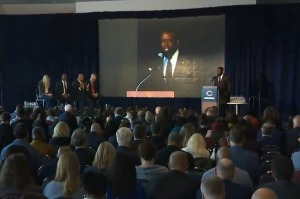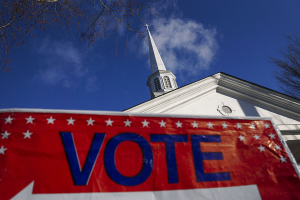Americans' Declining Urge to Marry
The typical American household has changed – and not for the better. A new analysis of U.S. Census numbers for the past 50 years show a startling decline in married couples with children – and married couples in general.
The percentage of married households with children has plummeted from 44.3 percent to 20.2 percent since 1960, while the actual number – now 23.6 million – has stayed flat, according to the report “The Amazing Decline of the Iconic Household” released last week.
“The average American household of mom, pop and two kids hasn’t been true for decades,” says Peter Francese, co-founder of American Demographics and author of the analysis. “There is not one more married couple with a child today than there was 50 years ago, and the overall number of households has more than doubled since 1960.”
Francese found that one out of five households are married couples with children, one out of 10 households are single parents, and one out of four households are non-family households (people who live together but are not related by marriage or blood).
“Non-family households have risen an astonishingly high percentage – 390 percent – in the last 50 years and are now a third of all households,” he says.
“The Amazing Decline of the Iconic Household” report points to more women entering the workforce as a major factor in the drop of married couples with children households.
“Also, I think the invention in the early 1960s of the birth control pill gave women total control over their fertility,” adds Francese.
That, coupled with women finding more work opportunities outside the home more, made marriage less of a financial requirement for females. “In every decade over the past five, marriage has become less of an economic necessity for women,” says Francese.
Maggie Gallagher, chairman of the National Organization for Marriage based in Washington, D.C., says there are a few more reasons for the decrease. “Divorce rates are high, unmarried childbearing rates are going through the roof, and people are having fewer children overall than they did in the fifties and sixties. … Overall we’ve become a less child-centered and family focused culture. We’ve separated sex, love, marriage and children to an extraordinary degree.”
Patrick Fagan, senior fellow and director of Marriage & Religious Research Institute for Family Research Council, headquartered in Washington, D.C., believes what’s happening in America is that “parents either don’t or won’t decide to make their marriage work, to stay together for their kids.”
The sharp drop in married couples with children does not simply correspond to a rise in empty-nesters, says Francese. “Over the past 50 years, married households with no kids only grew at less than one-third (104 percent) the rate of all households that were not married couples (350 percent),” he points out.
Marriage Civilizes
Why should we care if married couples with or without children have decreased so significantly?
“For the first time in American history, married couples in general have dropped below 50 percent, which means that the whole concept of marriage is in question,” says Francese. “These numbers point to a major avoidance of something that virtually every American used to do – marry.”
Gallagher comments, “Sex, babies and marriage are not just intensely personal matters – they are civilizational ones, too.” When you add children to the mix, the stakes are even higher.
“Children are our future,” says Gallagher. “When a civilization becomes sexually disorganized, it cannot seem to channel the erotic energy of the young into making stable, loving marriages in which to raise children.
“The result is a large increase in social problems, an increasingly large government that steps in to try to solve these problems, more suffering for children, and lower levels of happiness for adults, especially for women. If the trends continue long enough, it calls into question the capacity of the society or civilization to transmit itself into the future.”
Fagan agrees with Gallagher’s assessment, adding that married couples are especially necessary when raising children.
“The kids are going to be weaker in all aspects – mental health, IQ, disease, crime, addictions, grade point averages – in families that are not intact, that do not have a biological mother and father married,” he says. “These changes [in household makeup] are impacting many things, such as Social Security and the current fiscal crisis.”
U.S. Policy on Marriage
Economically speaking, the lower number of married couples with children translates into a low, sometimes negative, growth in median income.
“The reason for this is simple: Most married couples with children have two earners and the highest median household income of any household type,” says Francese.
Having fewer married couples raising children and more single and non-family units raising children will impact U.S. policy and politics, both Gallagher and Fagan say.
“Social scientists and economists can tell you that we are growing more and more dependent on government because of more non-intact families,” Fagan notes. “We’re growing government instead of growing families.”
Gallagher points out that as societies age, their economies appear to stall, which in turn means their governments grow larger. Then the number of workers supporting the retired grows, and the burden makes economic growth (and having children) more difficult, thus creating a negative downward cycle.
“As birth rates drop towards one child per woman, as is happening in some European countries, the question of the nation’s future becomes an open question: a one child per family norm means in each generation the size of the population is cut in half – 100 in the first generation, 50 in the second, 25 in the third, 12.5 in the fourth generation,” she points out.
“It’s hard to see that as a sustainable family culture. Civilizations that adopt that model are probably not going to make it in the long run.”
Fagan urges Christians to do more to uphold the sanctity of marriage, both publicly and privately.
“There’s an abandonment of pastors and parents in teaching [Christian principles on this subject]. … We need to help each other to repent and reform our thoughts and actions on marriage.”




























